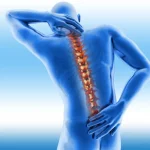
No matter who you are or what you do, we bet that you have faced muscle injury some time in your life.
Muscle injury may not sound like much, but it takes a toll on you. It restricts you from doing even the simplest of tasks like reaching up to get something from the top shelf or stretching yourself, among other things.
You could be a housewife, you could have a desk job, or you could have an outdoor job, we are all prone to it. When we talk about sports, muscle injuries are a significant pain in the back for sports players (pun intended).
It represents anywhere from 10 percent to 50 percent of all sports injuries. Whether you are into sports or not, you have to make sure that you treat your muscle injuries immediately and that you take the precautions when you are doing anything.
Failing to get the treatment will severely hamper your quality of life, and you might not be able to get back to your daily routine quickly.
Types of Muscle Injuries
Even though muscle injuries are critical, there hasn’t been any classification done about them. The only way that we can categorize muscle injuries is by checking the way that they happened. It means that there are two distinct types of muscle injuries: traumatic (acute) or overuse (chronic) injuries.
Acute Injuries
Acute injuries usually happen when there is a sudden and massive trauma that your muscles go through. It could be anything from falling to putting enormous strain on your muscles while exercising, and everything in between.
These injuries usually don’t happen in day to day life and are restricted to sports and other situations where your muscles come under a lot of stress.
Chronic Injuries
Chronic injuries can happen to anyone. These are more subtle than their counterparts and occur over a long period. They usually happen when the muscles are strained little by little over some time and finally reach a point where they can’t put up with it. These can occur suddenly, and therefore it is more difficult to find out exactly how it happened.
Common Injuries
- Trapezius myalgia
- Hamstring Strain
- Quadriceps Muscle Contusion
- Calf Strain
- Groin strain
- Rotator Cuff Tears
- Rupture Long Head Biceps
- Achilles Rupture
| Read also: The Health Benefits of Physiotherapy |
How Does Physiotherapy Help Treat The Injury?
Physiotherapy can help you with the treatment of your injury in many ways. First of all, when you visit your physiotherapist, they will take your assessment so that they can understand your injury better and find out all they can think about it.
Next will come to the examination so that they can evaluate just how much your muscles injured. Once they have established the category of the strain, i.e. 1st degree, 2nd degree, or 3rd degree, they will know exactly how to treat your muscles and what will be the estimated recovery time.
Here are the different ways that physiotherapists can help you out:
Therapeutic Modalities
Thanks to the rise and evolution of technology, physiotherapists have better ways to heal your injury as compared to before. Now there are electrotherapeutic devices like ultrasound and others that can help not just with the injury but also with the pain associated with the injury.
Heat & Ice
Heat and ice always had an immediate effect on injuries which is why physiotherapists all over the world are so fond of this therapy. When they use heat, it affects the tissue by increasing the blood flow in the targeted area. The more blood flow it receives, the quicker it will heal. When we talk about pain management as well as decreasing inflammation and swelling, ice is the go-to therapy.
Therapeutic Taping
A lot of people take physiotherapists for granted, but the truth is that they have an instrumental and vast arsenal with which they use to treat muscle injuries. One of the ways that they do it is by using therapeutic tape.
There are a lot of different types of tape products that they can use. Once applied to the targeted area, tape provides compression to the area as well as support which not only relaxes the injured muscle but also helps with the movement.
Manual or Self-Stretching
The main focus of any physiotherapist is on helping their patients heal quickly and get their mobility back. Usually, after you have suffered a muscle injury, you will also face muscle tightness.
It is the main reason why patients do not have full movement of their bodies after an injury. If you try to move after an injury, it can lead to re-injury, which is worse than before. Physiotherapists help you by providing stretching techniques that are verified and proven to help with the said injury.
They loosen up the muscles gradually so that you get your mobility back and don’t put too much of a strain on your already injured muscles. Not only do they help you with stretching, but they also guide you as to the exercises that you can do at home.
Strengthening Exercises
As your muscles heal and get back to their usual self, the physiotherapists will take you through strengthening exercises that will ensure that you don’t have to face the same problem again.
Conclusion
So, anytime you feel like you have sprained a muscle or strained it, visit your physiotherapist immediately. Make sure that you follow the RICE (Rest, Ice, Compress, and Elevate) protocol while you’re at it.
About The Author:
Britney Caira is a good writer, and her primary goal is to educate readers and share quality content, She would love to write about Health and Insurance. She assures you that the readers will find her writings interesting and engaging.




